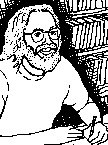
. Remembering the hacienda: religion, authority, and social change in highland Ecuador. Texas, 2006. 350p bibl index afp ISBN 0-292-81339-8, $60.00; ISBN 0292714394 pbk, $24.95; ISBN 9780292713390, $60.00; ISBN 9780292714397 pbk, $24.95. Reviewed in 2007sep CHOICE.
Lyons (anthropology, Wayne State Univ.) presents an ethnography of 20th-century indigenous relations with the government and the Catholic Church on the estate of Monjas Corral in the central highland province of Chimborazo, Ecuador. Throughout the book, he engages three intertwined themes of autonomy, resistance, and hegemony. Lyons began his research with an interest in the influence of liberation theology on indigenous peoples. Leonidas Proaño, Ecuador's "bishop of the Indians," attempted to use Monjas Corral (which he renamed "Tepeyac") as a model for rural economic development. Although over time Lyons's research focus shifted, the theme of critiquing social and economic relations remains constant throughout the book. Lyons excels in describing social relations on haciendas and how elites dominated indigenous labor. Extensive life histories emphasize the presence of different strategies and multiple responses to oppression. Through many of these accounts runs a desire for respect, a theme that also emerges in From Peasant Struggles to Indian Resistance (CH, Jun'03, 40-5975). In that book, Amalia Pallares emphasizes its political and cultural aspects, whereas here Lyons examines its interpersonal and religious dynamics. Summing Up: Recommended. All levels/libraries. -- M. Becker, Truman State University